Last Chance to Catch NYC's Holiday Notalgia Train
We met the voices of the NYC subway on our nostalgia ride this weekend!


For over seventy years, the Essex Street Market has stood at the northwest corner of Essex and Delancey Streets, serving the needs of local residents of the Lower East Side with a diverse collection of goods and sundries including flowers, meats, clothing and fresh produce. This May, the historic market is making a move across the street to a new space inside the cornerstone of Essex Crossing, a nine-site, 1.9 million square-foot redevelopment project. As finishing touches are being put on the space before vendors move in, Untapped Cities got a sneak peek at the new market space and learned about its new features and design, and how the NYCEDC will support and encourage the growth of existing vendors making the shift, and preserve the history and culture of the longstanding market.
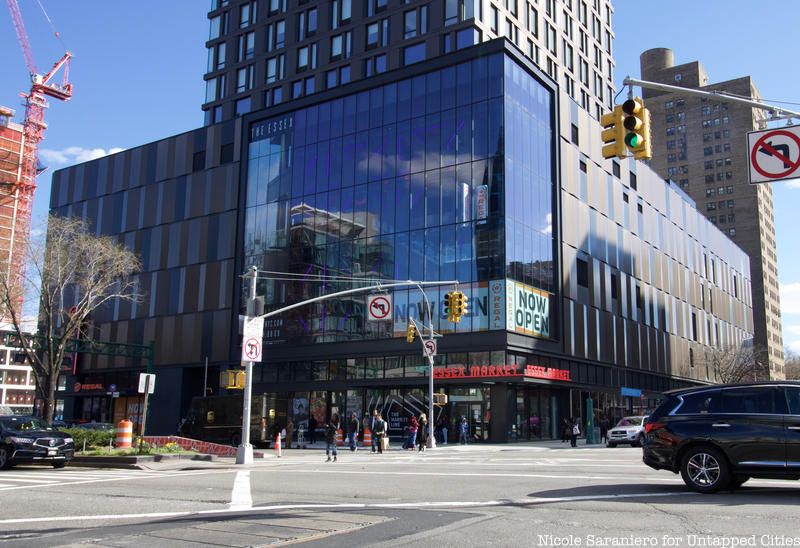 The new Essex Street Market building
The new Essex Street Market building
The original idea for the Essex Street Market was proposed by Mayor Fiorello LaGuardia in 1934. At the time, Lower East Side streets were overrun with pushcarts operated the largely by the immigrant population that flooded into the neighborhood in the early nineteenth century. The pushcarts created congestion in the streets which led to hazardous conditions. Emergency vehicles had trouble passing through the streets and food safety was a major concern. The vendors were eventually moved off the streets and into an indoor retail market in 1940.
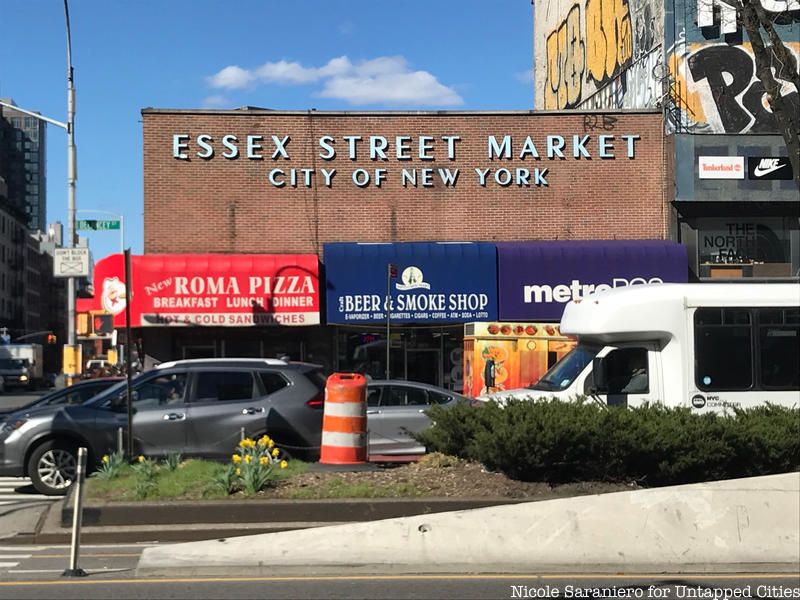
The original Essex Street Market
The market became a place where local residents not only bought their provisions but had a place to socialize, share ideas and get to know their neighbors. With the upcoming opening of the new Essex Street Market, the New York City Economic Development Corporation (NYCEDC), the organization which assumed control of the market in 1995 and carried out $1.5 million in renovations, hopes to transplant the important community-driven values and small business focus of the original market into a brand new space.
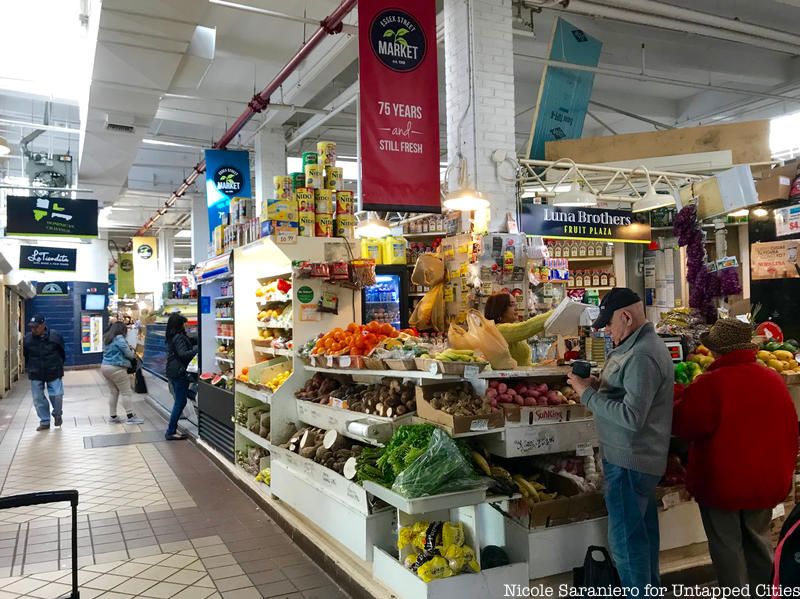
Inside the original Essex Street Market
Measuring 37,000-square feet, the new market is roughly three times the size as the old one, with space for two full service restaurants, thirty-nine market vendors, a state-of-the-art demonstration kitchen, mezzanine level public seating, event office spaces and a sub-cellar vendor storage space. Inside the market, shoppers will find fourteen new vendors and twenty-five vendors from the original market. Returning vendors like Saxelby Cheesemongers and Essex Farms will be joined by newcomers such as Samesa, a contemporary Middle Eastern takeaway counter; Riverdel, a vegan specialty shop that crafts their very own in-house cheeses, and Chinatown Ice Cream Factory; a family run business from Chinatown now operated by the second generation. For some new vendors coming into the market, it will be their first brick and mortar location. The unique mix of vendors will offer affordable daily provisions, prepared and specialty foods. The new space allows existing vendors to expand their current offerings with more room to stock a diverse array of goods and install food preparation equipment provided by the NYCEDC.
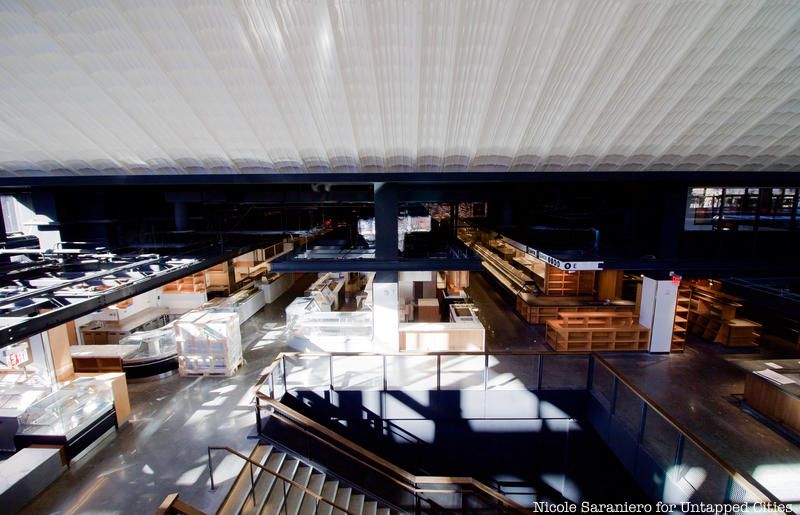
Looking down at the new market from the mezzanine level
The market was designed by SHoP Architects and acclaimed market architect Hugh A. Boyd. While SHoP and the NYCEDC set general design parameters for the look and feel of the marketplace, Boyd worked directly with individual vendors to create spaces that are optimal for their business, and show some of their brand character. Walking through the market, you can notice variations in the use of stone, metal, wood, tile and concrete materials. The overall aesthetic of the market is sleek yet inviting with a slightly industrial feel.
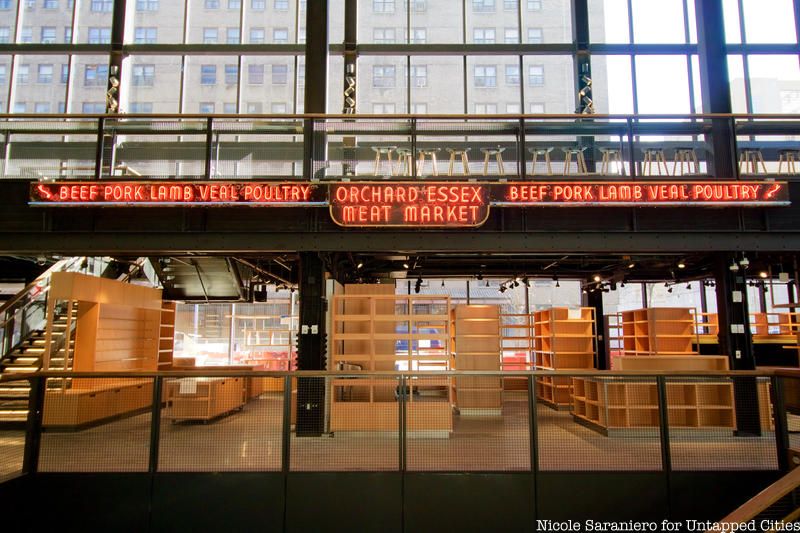
A unique design feature of the public market is the historic sign that hangs off the mezzanine level. The original Essex Street Market was actually made up of four different buildings and one of them, Building D, stood on the site of the new building. Building D was a meat market and the neon sign seen below comes from there. The neon was restored and it now adorns the new market. All the signage in the market, including exterior neon marquees above the entrances, features a typeface based off of the found sign. Running along the top of the vendors there will be uniform signs that label each business, but each vendor will also be able to put up their own personalized signage as well.
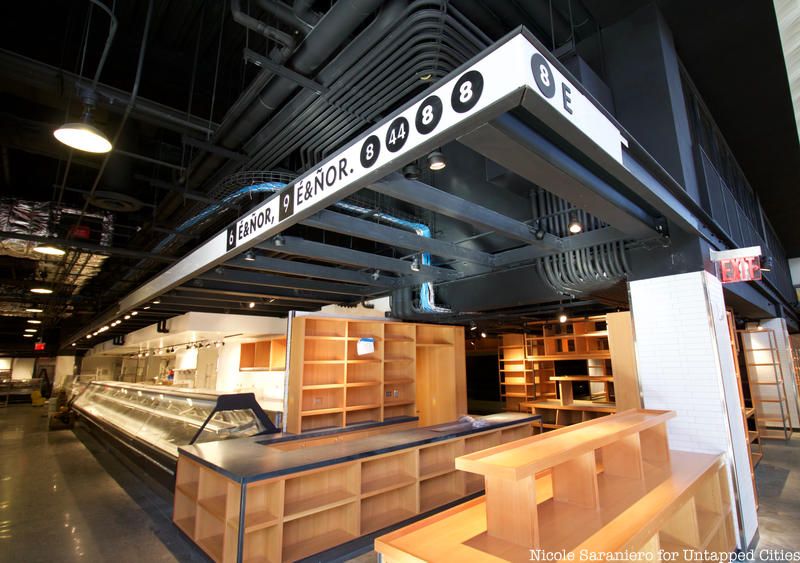
In addition to the ground level vendors, the new space will feature a large gathering area on the mezzanine level. The floor to ceiling windowed space has seating for over 100 people and unobstructed views of the market activity below and streets scenes. Directly adjacent to the seating area is a state-of-the-art demonstration kitchen that will hosts community programming centered around food and nutrition. French doors connect it to the rest of the gathering space.
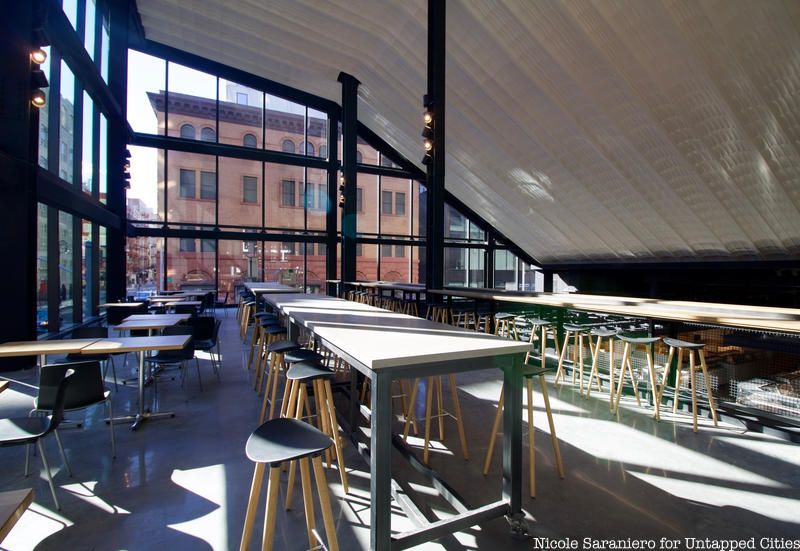
Below the Essex Street Market, connected to it by a grand staircase, is The Market Line, a for-profit marketplace that will feature an eclectic mix of more than 100 locally-sourced food, art, music, and fashion vendors. Above the Essex Street Market there is a Regal Cinema and above that are 198 residential units. The building is a mixed-use site which makes up one part of Essex Crossing. When complete in 2024, the development will boasts 1,000 new housing units, 450,000 square feet of retail, 400,000 square feet of office space, community attractions, and green spaces.
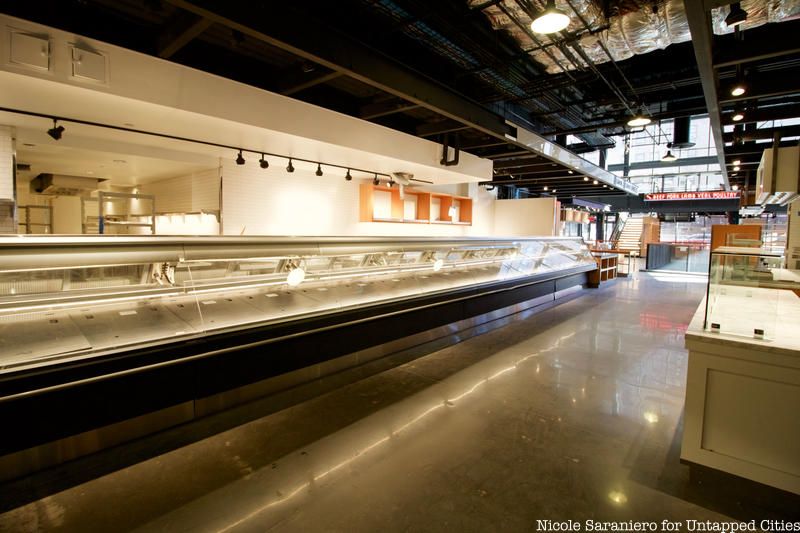
What makes the Essex Street Market unique is its dedication to showcasing its own history and preserving the community culture. As opposed to other vendor markets in the city, the Essex Street Market aspires to be not just a place where locals go to drop in and grab a bite, but a place they return to frequently to stock up on provisions and engage with the community.
Vendors will be moving into the new space over the next coming weeks and a grand opening is projected for early May. You can learn more about the history of the Essex Street market here, and check out more pictures of the new space below.
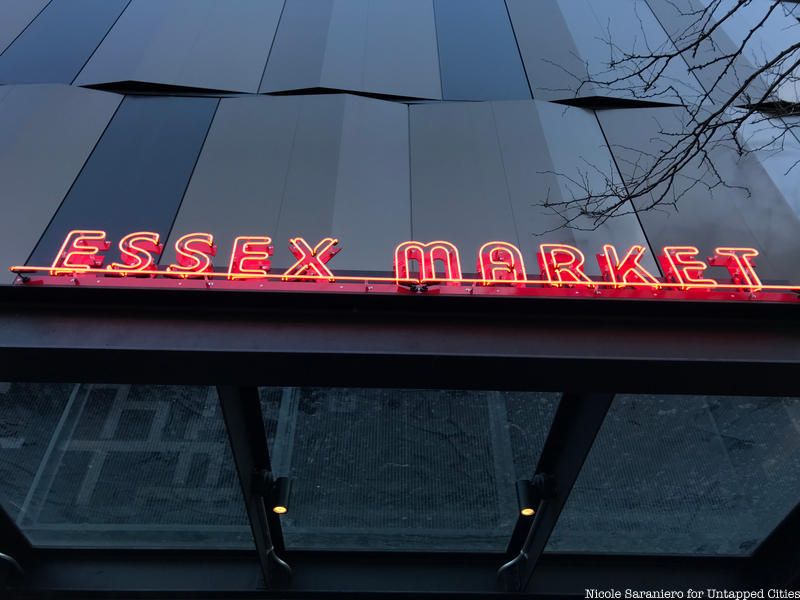
An exterior marquee
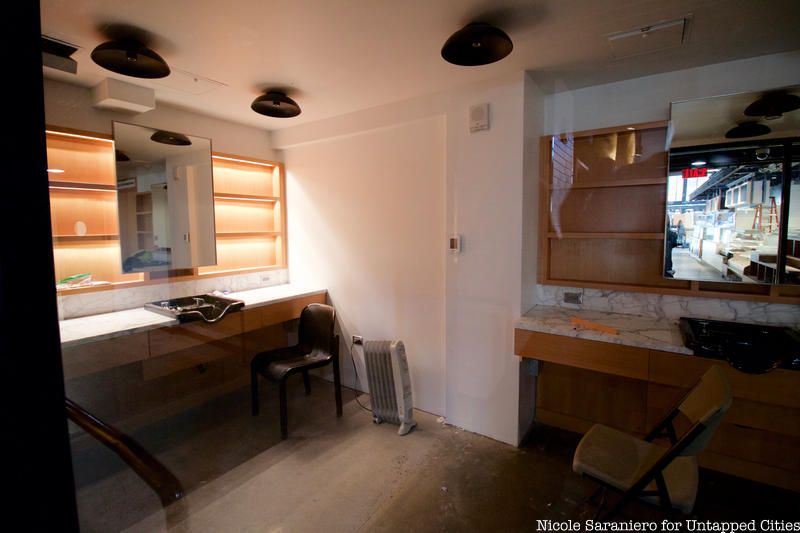
A new space for the current market’s barber
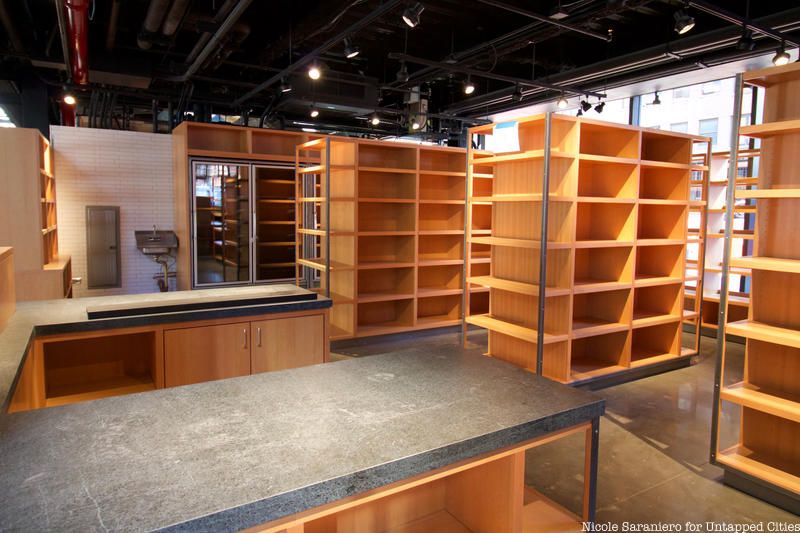
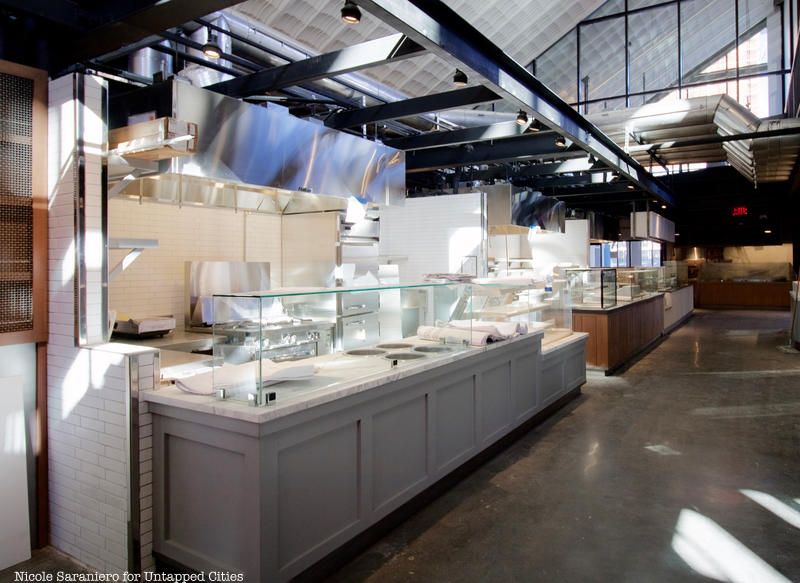
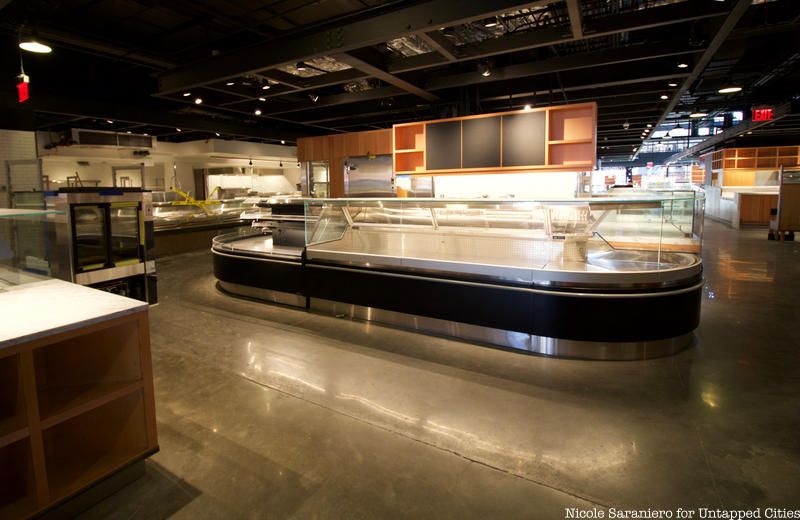
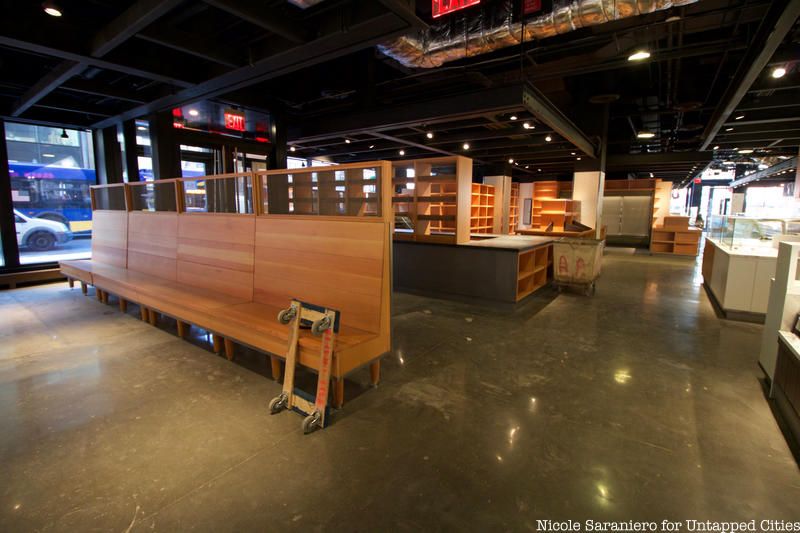
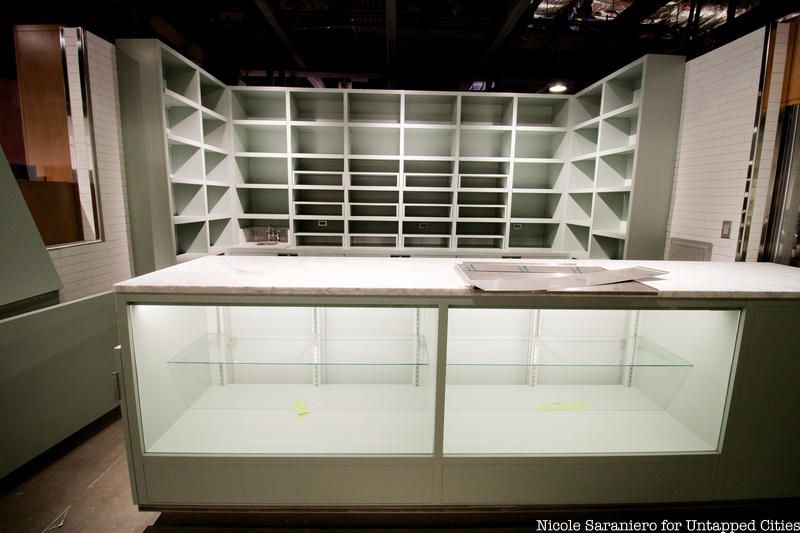
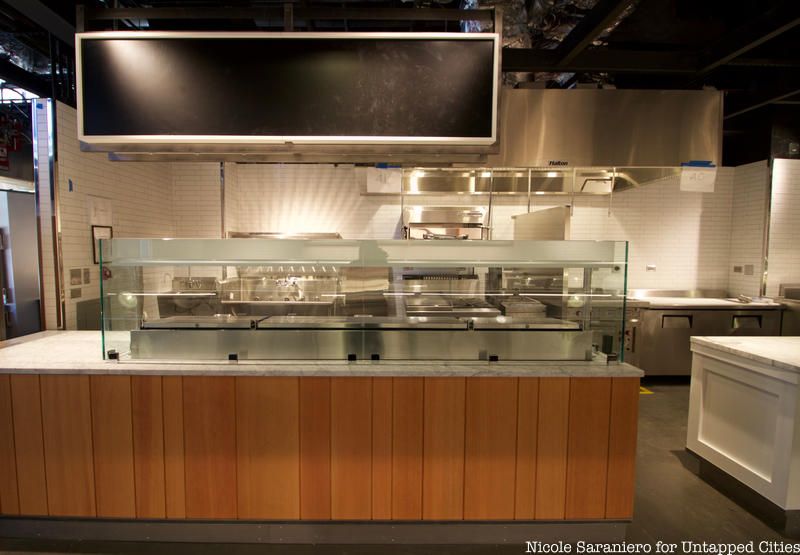
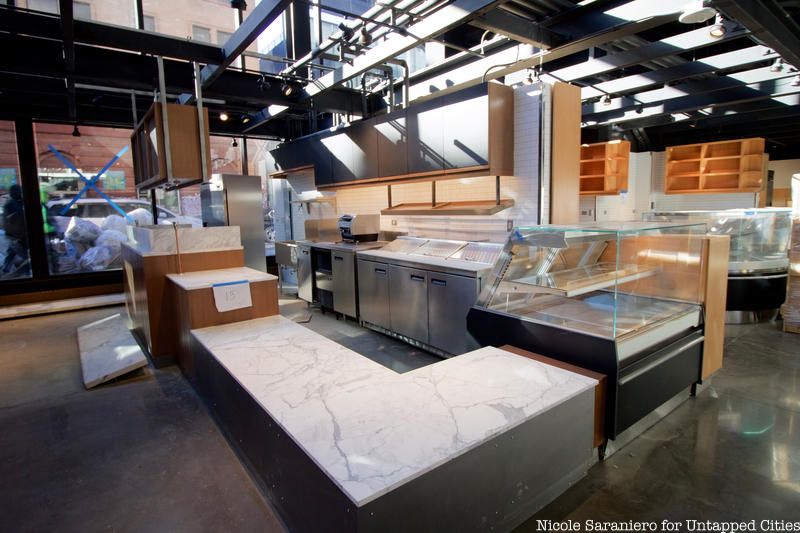
Next, check out The Top 10 Secrets of NYC’s Lower East Side
Subscribe to our newsletter